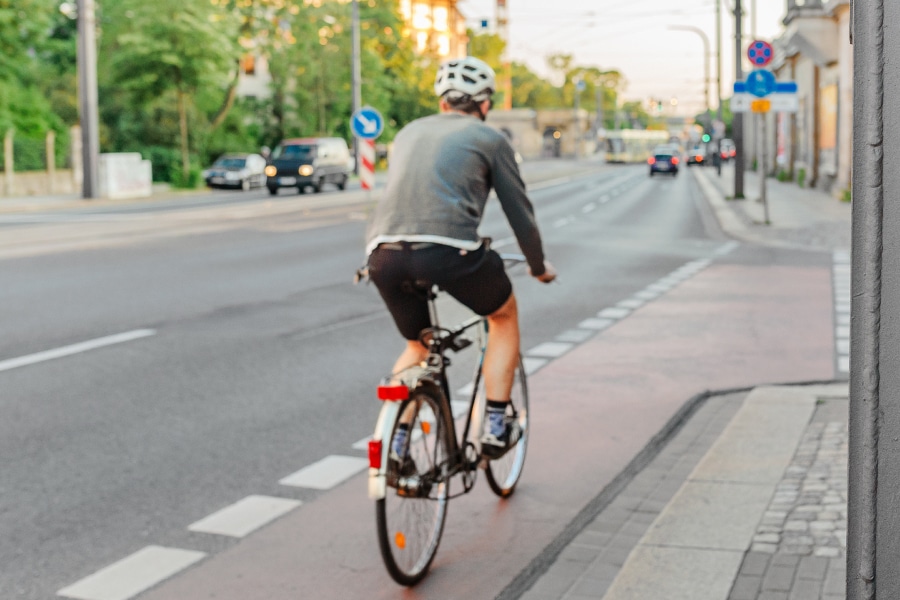Spurred on by a desire to keep fit and healthy, or commute to and from work, or simply to get around their local area, the number of people regularly using a bicycle has risen sharply in recent years.
The World Economic Forum (WEF) estimates that around the world some 2 billion people ride bicycles, a figure which it expects to rise to 5 billion by 2050, as we transition away from fossil-fueled vehicles and onto more sustainable forms of transport.
As we take to bikes more, governments and local authorities will need to design, plan and invest in the infrastructure to cater to the increased numbers of those riding bikes. This will enable cyclists to travel more safely and attract more people to use two wheels to get around.
Europe’s Cycling Bonanza
A recently published report has revealed that more people now cycle in central Paris than drive, 11% vs. 4%, while in Amsterdam—where the 835,000-strong population owns around 881,000 bikes and 63% of people ride a bike every day—such is the proliferation of two-wheeled riders that as a pedestrian you’re more likely to be dinged at by a cyclist’s bell than blasted with a car horn.
The picture is similar elsewhere in Europe. According to the European Union, 70% of adults in Norway own a bicycle, as do nearly the same percentage of households in Switzerland. The WEF says Copenhagen is the most cycle-friendly city in the world, adding that when asked, residents of the Danish capital said they choose to ride their bikes rather than travel in a car or on public transport “because it’s the fastest way of getting around in the city.”
Curious why 3 million AECO professionals worldwide use Bluebeam to finish projects faster?



Across the English Channel, figures from Transport for London (TfL), the organization that operates and manages public transport networks in the UK capital, showed the number of daily cycle journeys increased in 2023 to an estimated 1.26 million trips per day, up 6.3% from 2022, and 20% higher than 2019.
The onset of COVID-19 boosted rider numbers; once the pandemic began to abate, many people—still worried about catching the virus—cycled to avoid crowded trains and buses. The development of electric bicycles has also given cycling a boost; in 2017, UK sales were around 55,000. This figure is now north of 155,000.
Meanwhile, the global value of all bicycle sales by 2029 is expected to be a whopping $70 billion, up from $63 billion this year.
Investing In Cycling Infrastructure
This is all hugely encouraging for those looking to promote the benefits of cycling. Yet work needs to be done to improve the on-the-road environment for those taking to two wheels.
Authorities have sought to react to the growing trend by investing in cycling infrastructure, in particular the creation of dedicated cycle lanes.
The UK government says it has invested more than £100 million in cycling and walking paths and e-bike loan programs, while in London, TfL said the Cycleway network, which includes those routes that are mostly but not continuously segregated or protected from vehicles, has grown from 56 miles in 2016 to 223 miles in 2024.
However, the amount being invested in the UK is dwarfed by that being spent in Europe.
The European Cycling Federation (ECF) notes that around €3.21 billion is set to be invested in cycling projects across Europe as part of the 2021-2027 EU structural funding program, a 30% increase on the previous 2014-2020 financial period. This equates to building about 12,000 km of cycling infrastructure.
The ECF says that, in absolute terms, Poland will be the biggest beneficiary of the current funding program, with €780 million in financing, followed by the Czech Republic (€409 million), Italy (€376 million) and Hungary (€300 million), with these four countries accounting for 60% of total planned investments.
The largest investors measured in euros per capita are Lithuania and Estonia, both investing €46.6, followed by the Czech Republic (€38.8), Slovenia (€35.4) and Hungary (€30.9).
Cycling’s ‘Benefit to Cost’ Message
The cycling website cyclinguk.org makes several cases for investing in cycling infrastructure. First, it highlights that improving routes for cyclists boosts business, particularly among retailers on high-traffic streets and cycling routes, while cycle lanes also move more people in less space, reducing congestion.
Investment pays off, the site adds, with the average benefit cost ratio for walking and cycling projects both in the UK and further afield an impressive 13:1. That means for every pound spent on walking and cycling infrastructure, £13 or its equivalent is returned to the economy.
Cycling.org makes a “Field of Dreams” point too: build a dedicated cycle path and people will ride on it, as evidenced by the increase in cycle journeys in Seville in Spain—a country not noted for the popularity of urban cycling—after some money was pumped into creating new lanes.
It’s not just governments and local authorities that see an upside in considering the needs of cyclists. A growing number of workplaces now make a big deal of offering secure bike storage and showering facilities for employees to attract staff, while many firms help their workers buy a bicycle for their commute.
And new housing developments often make great play of the cycle parking facilities for residents, encouraging healthy lifestyles.
Designing and Planning Cycling Networks
Building cycle lanes first needs careful design and planning, and governments often issue advice to local authorities to steer them through the process.
The UK government’s guidance on planning and delivering cycling lanes, for example, spells out a series of “do’s and don’ts” that aim to improve outcomes for all concerned, including giving consideration to a potential route’s directness, its safety—actual and perceived—and how it interconnects with public spaces.
Inevitably, some car drivers object to having their road space being taken away and allocated to cyclists. But as people become more aware of the issues, cycling will become more accepted. Greater investment in cycle lanes and more advanced methodologies to accommodate cycling through better transport network design and planning feel inevitable.
Copenhagenize, a design consultancy that works with local authorities who want to plan and design cycling infrastructure, has helped a number of European cities, including Lisbon in Portugal and Tours in France.
It also recognizes the importance of establishing safe and user-friendly cycling networks beyond cities. As it says in its latest report: “In rural settings, individuals often need to favor using their bicycles for short trips and seamlessly connecting to other modes of transportation, specifically trains.
“In these contexts, embracing the bicycle not only enhances local mobility, but becomes a pivotal catalyst for holistic rural development.”
Improving conditions for riding bicycles in large cities and towns and beyond is a work in progress, but it is heading in the right direction. Indeed, it has to, since the genie is already out of the bottle. Cycling is no longer a niche activity but is becoming the urban norm, creating the conditions for more sustainable, climate-friendly and healthier travel.
Considered from any point of view, it’s fair to say we’ll all be the better for it.











